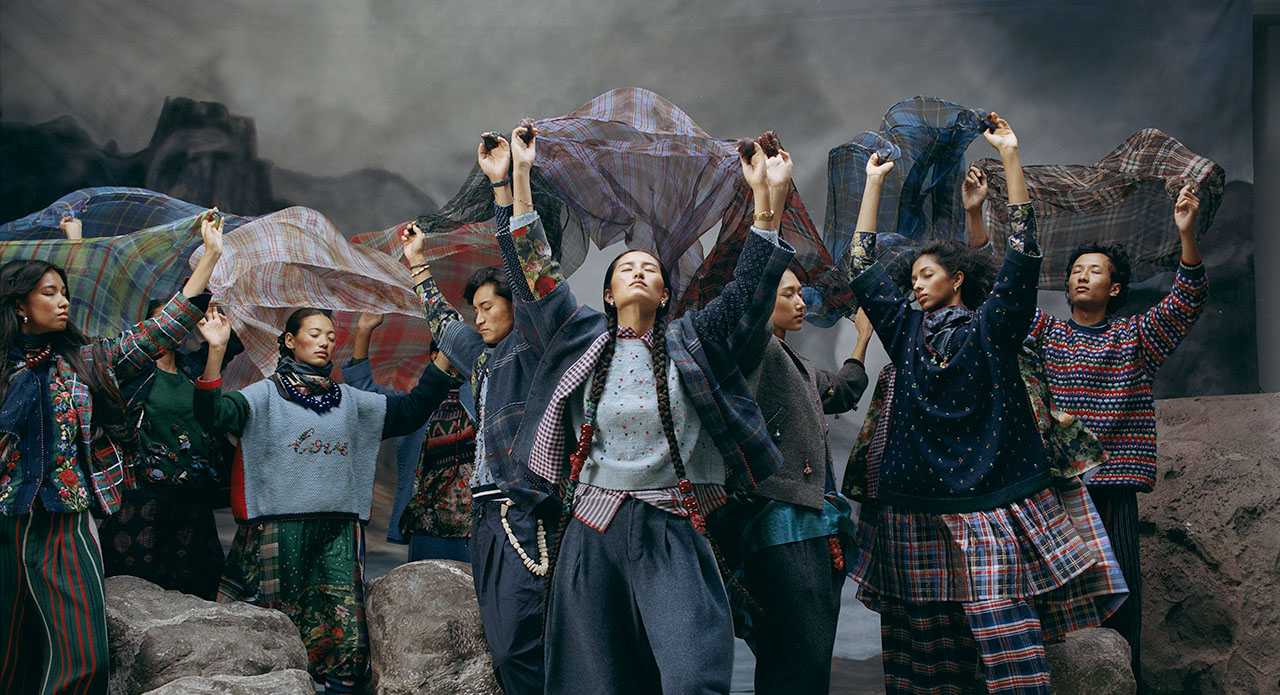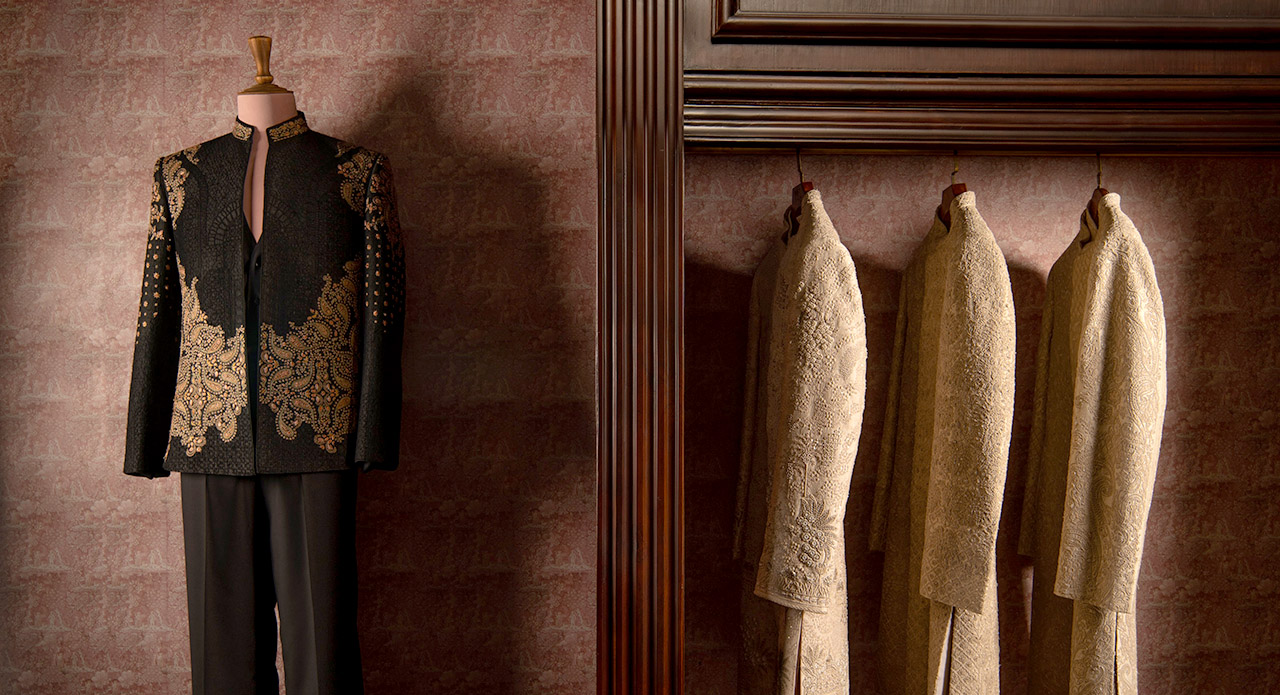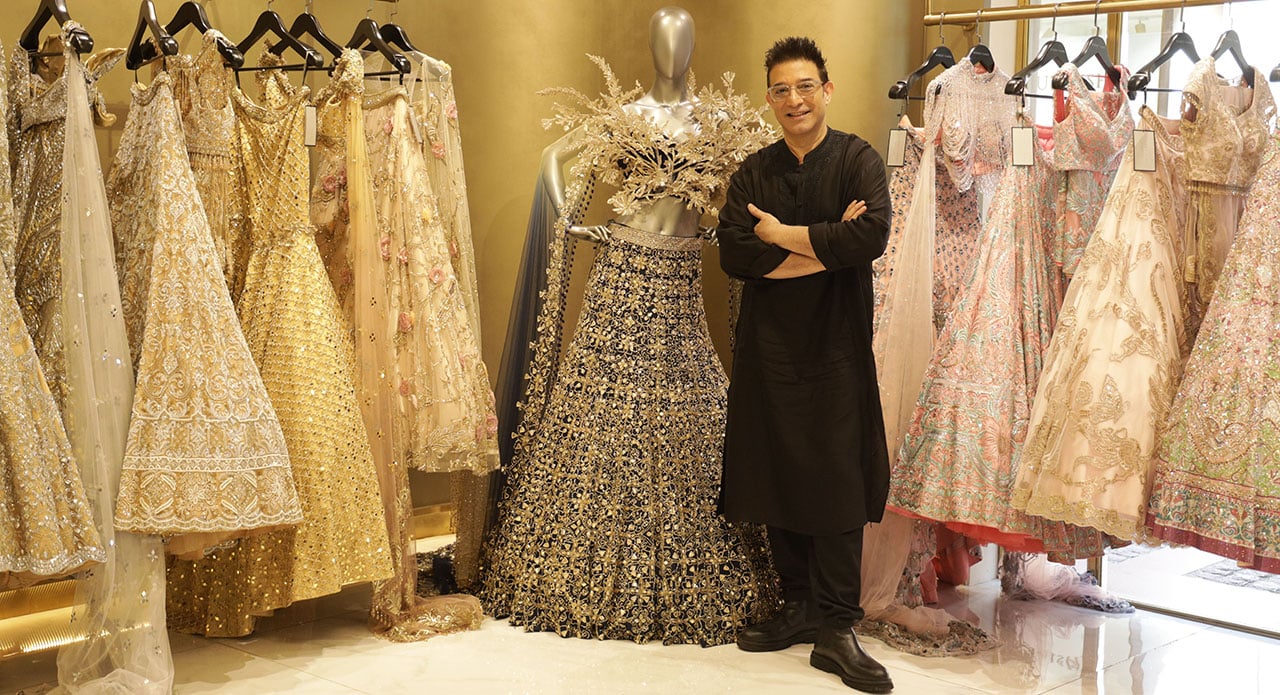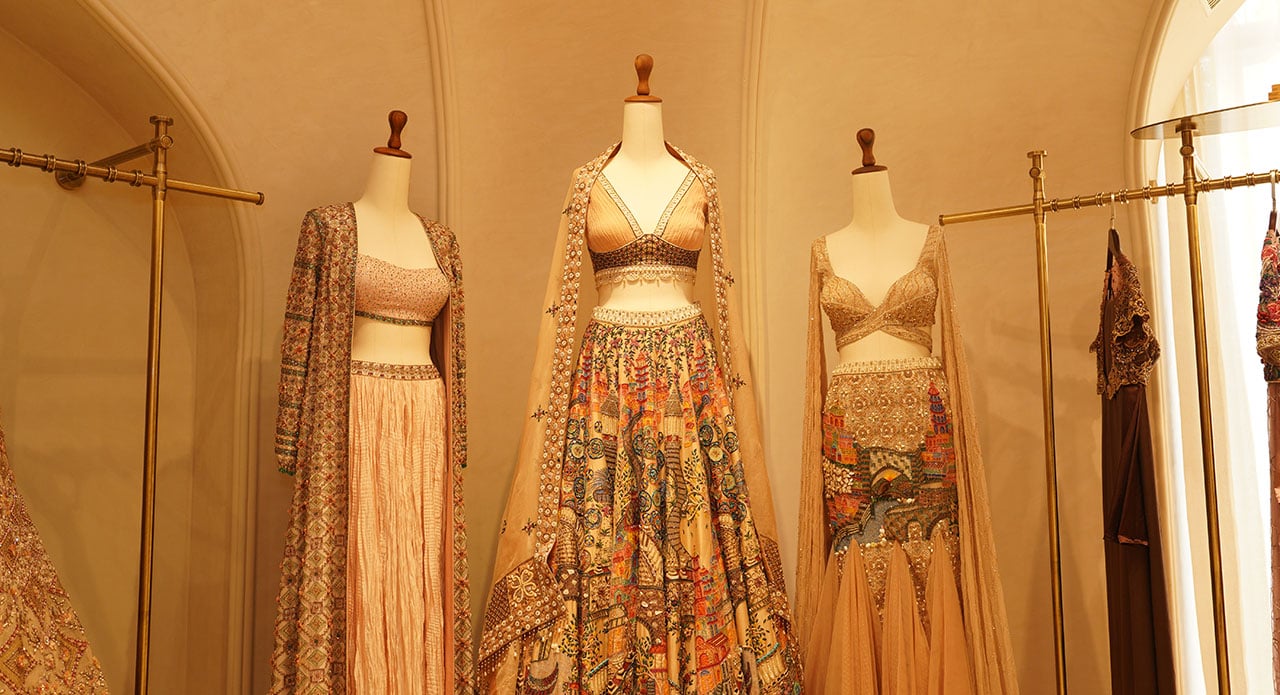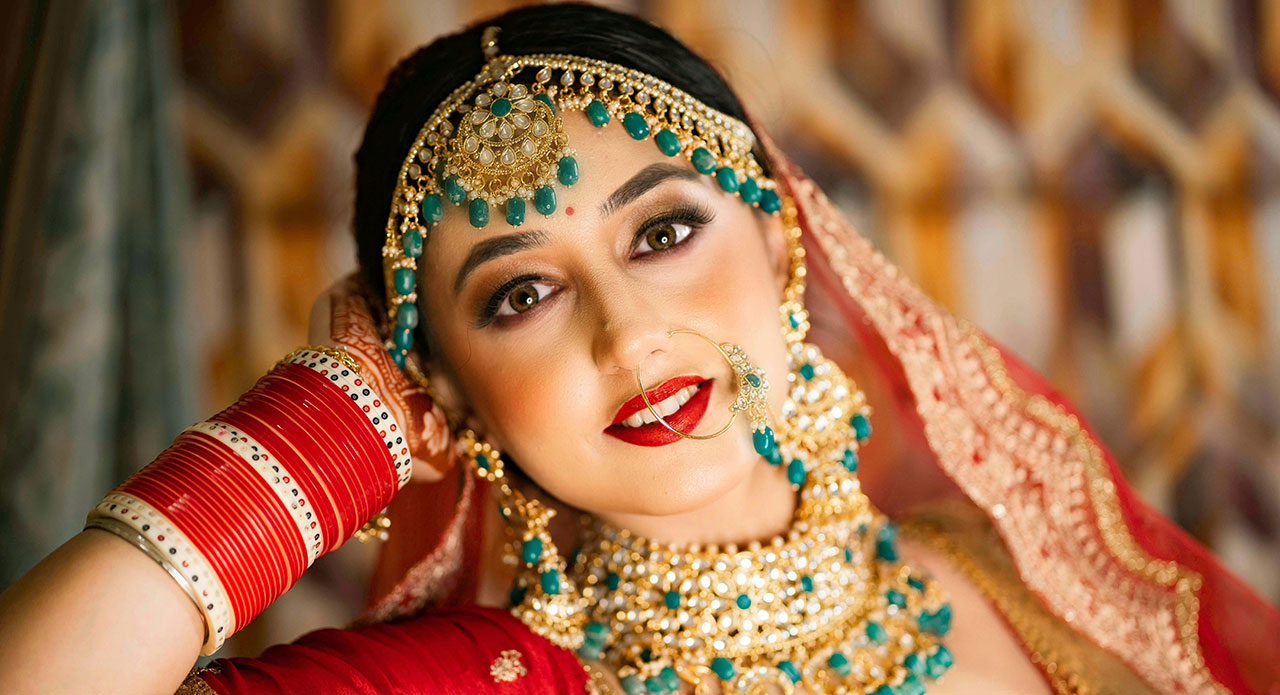Amid the vast lush expanse of Scottish hills, gurgling brooks, tall trees, and soft humming bird songs, design label Péro finds its inspiration — in tartan. The textile finds its mention in ancient history with the earliest known tartan dating to 3rd to 4th century AD in Scotland. It is not just a handwoven cloth, but one that became very popular in Scottish Highland culture, and came to be recognised as a signature Highland dress, loosely linked to Scottish clans.
This winter, Aneeth Arora, founder and designer of Péro does not just picks tartan from Scottish history, she re-imagines by merging it with Indian crafts for her new Fall/Winter collection BONNIE!. Expect a tartan bandhani coat, tartan floral patchwork on jackets, a Chanderi top paired with culottes featuring tartan pattern and more such ensembles. They present the Indian way of looking at tartan. Further, to make the collection visually sensorial, Arora who could not do the campaign shoot in Himachal due to untimely rains this year, brought the mountain vibe to a studio.
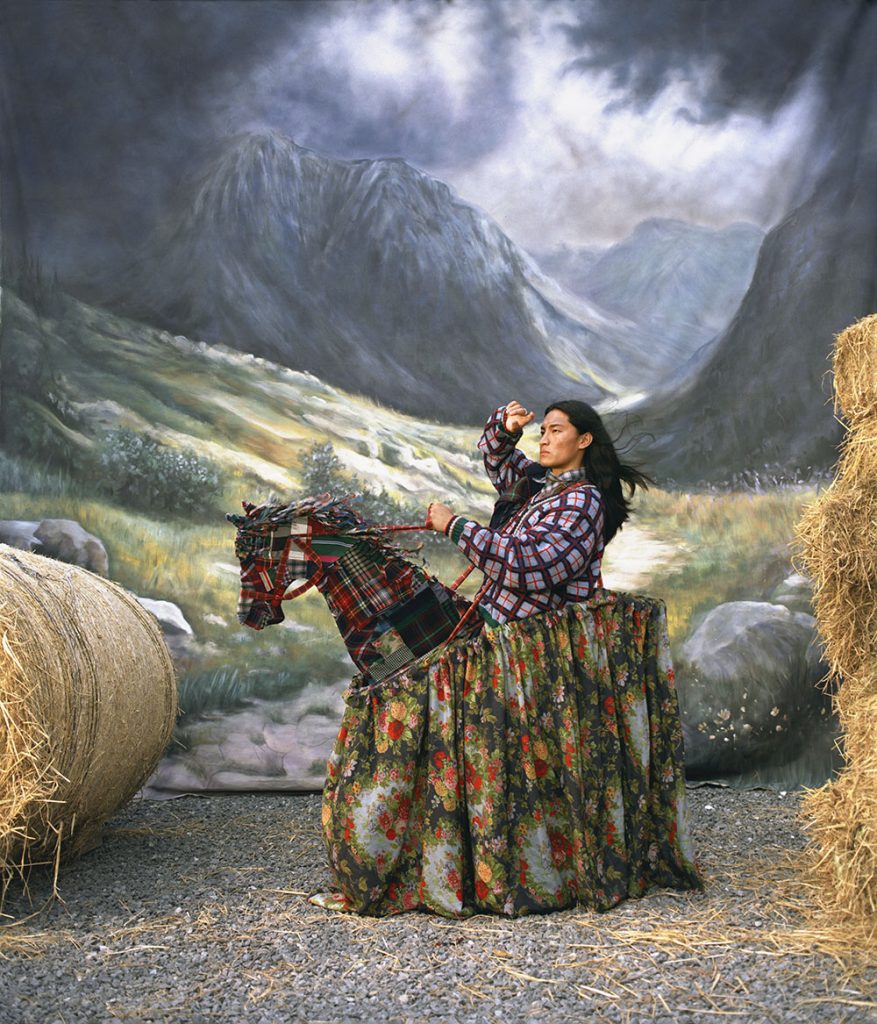
“We brought the outdoor landscape indoors in a studio by engaging skilled hand painters, who painted four beautiful backdrops of Scottish highland during different times of the day from dusk to dawn. Wooden fences, firewood, hay stacks and rocks were all assembled for the shoot and we even invited a Bagpipe band from Uttarakhand, to be a part of the campaign. And that’s how BONNIE came to life.”
As BONNIE makes us stop by as this winter’s most evocative campaign from an Indian designer, we speak to Arora on how she blends seven different types of Indian weaves with tartan, and letting this Scottish Highland textile travel through the world of Péro.
What’s in the name BONNIE? What was the inspiration behind blending the soul of Scotland with India’s rich textile heritage?
BONNIE means BEAUTIFUL in Scottish. BONNIE is more than a collection, it’s a story, a song of memory and craft. We began with the idea of tartan, a textile deeply tied to the Scottish Highlands and the notion of clan, belonging, landscape. But rather than simply recreating tartan in its traditional form, we wanted to let it travel into the world of Péro: playful, layered, rooted in Indian craft. The name “BONNIE” evokes that sense of nostalgia, of something beloved returning to you (“Bring Back My Bonnie to Me” became one of our early inspirations) and so it felt like the perfect bridge between Scotland and India. I see the Highlands, the mist, heather, lochs, the wind across glens and see Indian handlooms, artisan communities, slow craft; both geographies share a deep relationship with textiles that carry memory. Through BONNIE! we connect those worlds and invite the wearer into that cross-cultural weave.
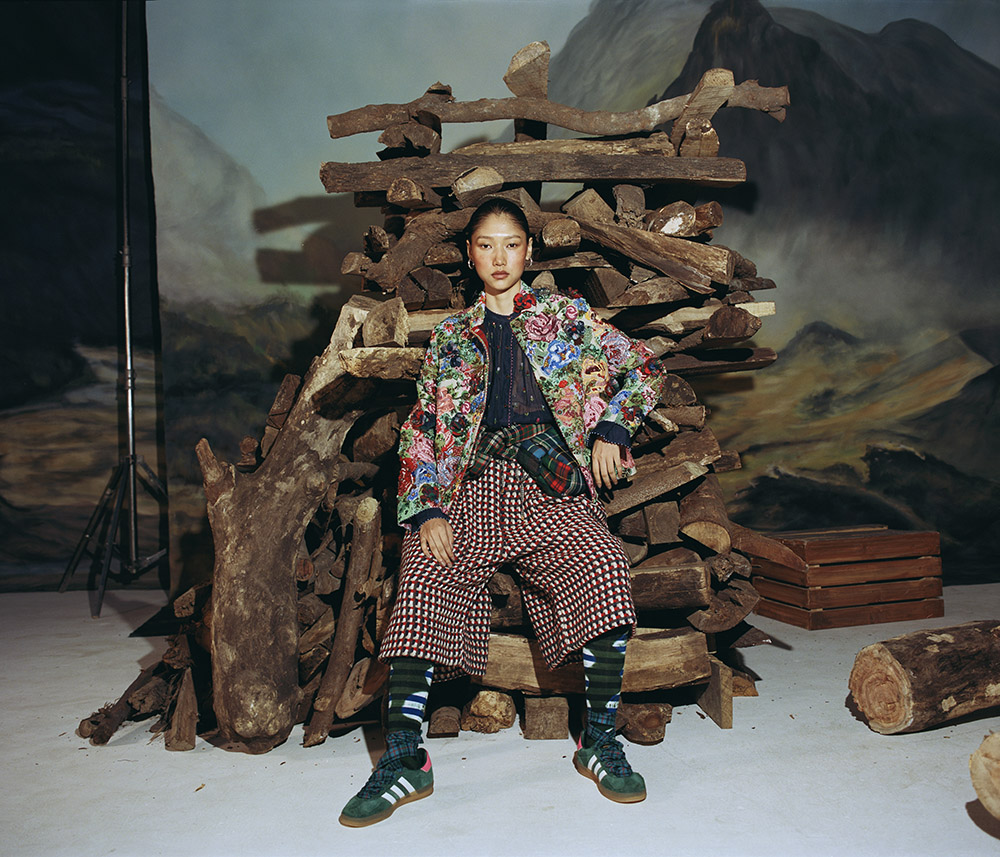
This collection brings together many Indian weaves — Maheshwari, Bengal cotton, Varanasi brocades, Pashmina, Chanderi, Mashru, and Himachali wool. What exclusivity do each of these crafts carry?
Each weave in the collection was selected because it carries a particular voice and heritage, and because it broadens our interpretation of tartan in an Indian context. For example, Maheshwari silk-cotton gives us a light, and shimmering hand-feel with subtle drape which makes it ideal for a modern reinterpretation of checks and grids without feeling heavy. Bengal cotton brings everyday comfort and the breathability of hand-loom, it roots the collection in wearability. Varanasi silks and brocades bring depth, weight and ritual; a rich counterpoint to the lighter fabrics. Himachali wool and Kashmir Pashmina bring the high-altitude, textured world of cold-weather craft; this is where our cozy coats and knits live. Mashru from Gujarat, with its unique silk-cotton blend and lustre, gives us a bridging textile: surface richness but grounded in cotton warp/weft heritage. Chanderi silk from Madhya Pradesh offers subtle sheen, fine weave, lightness so that even heavier textures have their airy counterpart. Together, these crafts are exclusive not just because of their origins and handwork, but because they bring distinct tactile qualities like luminescence, weight, softness, drape, openness. In reworking tartan, we needed range.

How did you ensure each weave retained its individuality while speaking the common design language of Péro?
The key lay in the interpretation: we did not try to force every craft into the same mould. Instead we gave each weave space to shine. For instance, a Pashmina might become a muffler with subtle checks; and a Mashru becomes a tunic with appliquéd grids. We unified the collection through consistent design cues: the tartan-inspired geometry (checks, grids, intersecting lines), the palette (greens, reds, blues, neutrals), the surface ornamentation (beadwork, ruffles, pleats, embroidery) and the silhouette language (anti-fit coats, easy dresses, soft knits). We layered the fabrics and techniques in combinations: a Bengal cotton shirt under a Himachal-wool coat; Maheshwari silk skirt with a hand knitted woollen scarf. That layering lets each craft speak and belong. The brand’s signature philosophy of craft meets playfulness meets memory runs through no heavy formalism, but a story-driven approach, so each piece has a narrative. That narrative is the underlying common language. In effect, each weave is a chapter; the collection is the anthology.
View this post on Instagram
How did the collaboration with Afghan refugee artisans come into being?
We have been working with them for years and I discovered them in the streets of Bhogal when I saw one of them wearing a chiffon dupatta with a very intricately crocheted border. I requested them to let me buy that dupatta in exchange for a new one because I wanted to add it to my textile resource library and during that discussion I asked them if we could work together and since then we continue to work every season. We started working with very fine yarn, but then kept trying new things every season. This season we have done chunky crochet pullovers with tartan patterns and crochet wool flower trims.
Which embroidery crafts, patterns and motifs have you worked in this collection?
We layered a number of hand-surface techniques with Péro’s signature surface ornamentation like beadwork, stumpwork, appliqué, woollen pom poms, quilting, ruffles, and pleating. A highlight for this season’s handwork is how the semi-precious uncut and polished stones appear in embroidery and tassels carrying with them the scent of moorland rain and woodsmoke.
Tell us about the colour palette and how did you pick each shade?
For the BONNIE! collection, the palette was born from place and memory: green for the hills, blue for the lochs, red for the blood of kin. With that tartan wraps the body in memory and the heart in kinship. These core tones anchor the story, while the thread of craft leads us into the age-old tie-and-dye grids of Gujarat: dusty ochres, indigos, rusts and muted neutrals layer in the artisan’s hand. The checks and colours of this season are not mere patterns, but heraldic symphonies where each hue a proud banner of belonging and every grid a celebration of craft.

What makes this collection heirloom-worthy and exclusive despite being playful as always in Péro’s design language?
The “heirloom-worthy” quality comes from several factors: the depth of craft, the provenance of textiles, the intentional slow-making and the narrative embedded in each piece. When you know that a coat is hand-woven in Himachal, that a scarf carries Afghan-artisan crochet grids, that the embroidery uses semi-precious stones, you recognise it is not seasonal fast-fashion. The “exclusive” quality comes from limited production, artisan collaborations, unique fabric treatments (e.g., tie-and-dye grids from Gujarat, hand-woven Maheshwari silks), and the story behind it (Scotland + India, craft + memory). At the same time, we keep Péro’s playful language alive: anti-fit coats, easy dresses, soft knits, ruffled scarves, tactile surfaces so the wearer feels both luxury and joy, heritage and fun. That duality is core to our DNA.
